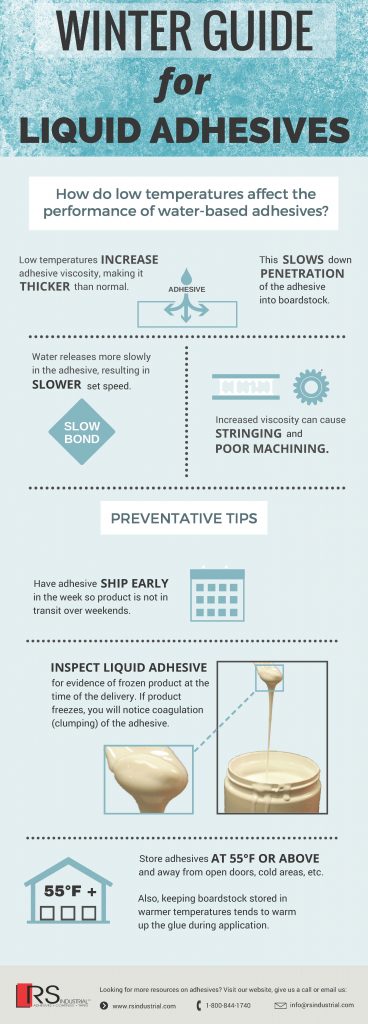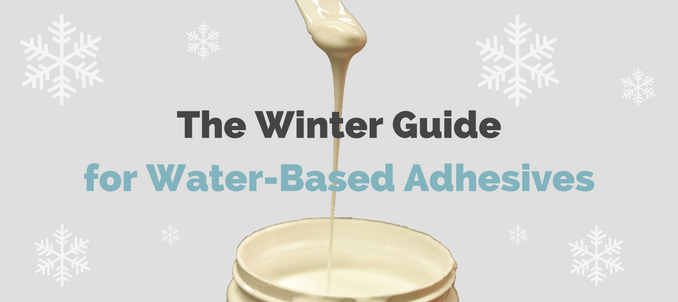It’s that time of the year for warm flannel, toasty fires and hot cocoa. It’s also the time of the year that can impact your gluing process if you’re in the packaging industry.
There’s no bigger catalyst for changing the behavior of an adhesive than temperature. Temperature influences adhesive performance to a large degree. When exposed to colder weather, water-based adhesives may behave differently and have negative effects on your production line.
A Change in Adhesive Flow
One of the most notable effects of water-based adhesives exposed to low temperatures is the change in thickness. Decreased temperatures increase adhesive viscosity, making it thicker than normal. For instance, consider the effect of temperature on honey. When cold, the viscosity of honey is high, causing it to flow more slowly. When heated, it has the opposite effect. The viscosity decreases and the honey flows more freely. Similar to honey, water-based adhesives change in thickness when exposed to cold and heat.
Increased Viscosity: How it Might Affect Your Process
Since increased viscosity slows down the flow of the adhesive, this can make it more difficult for the adhesive to penetrate into the boardstock. As you can imagine, the thick liquid sits on top of the substrate’s surface, slowing down its ability to seep through the fibers of the boardstock. Increased viscosity can also cause stringing and poor machining. These issues could result in field failures and downtime due to maintenance, and ultimately, increased costs.
The good news is that there are several actions you can take to prevent the cold weather from impacting your adhesive performance. We’ve put together some tips to help you brave the colder months ahead.

Quick Preventative Tips:
• Have adhesive ship earlier in the week so that product is not in transit during the weekends.
• Be sure to inspect your adhesive upon arrival. If the product freezes, the adhesive will appear to have clumps (coagulation). The infographic provides a great visual of the coagulation you may see.
• Store adhesives at 55°F or above and away from open doors, cold areas, etc. Also, we recommend keeping boardstock stored in warmer temperatures. This tends to warm up the glue during application.
As temperatures continue to drop, following these tips can help you save costs and prevent downtime. For more information or guidance on applying water-based adhesives, contact us at 1-800-844-1740 or use the contact form below. Our technical service team is available 24/7 and will quickly respond to your inquiry.

